Those of us who came of age in a different era can find it disconcerting to live at a time when knowledge and expertise frequently take a back seat to marketing hype and fact-free perspectives. Still, fly fishers will always benefit from accurate information and informed opinions. Here are my thoughts on various aspects of fly fishing for trout. I hope they’ll prove worthwhile …
Reading Water
Anglers who have the ability to read water typically discern two things: where the fish are likely to be, and where they aren’t. Both are extremely important. Any fly fisher worthy of the name should work to develop a basic understanding of river currents and the places where trout tend to hold. You don’t necessarily need a post doctorate degree in hydrodynamics — not that it would hurt — but you do need to understand where to find your quarry if you want to be successful.
Reels
Way down deep in the bowels of the angling universe, there’s a school of thought that says reels don’t really matter; at least not for trout. I disagree. If you’ve ever had a reel suddenly free-spool, or had your drag freeze up, or had a fish blow up the precisely-engineered innards of your reel, or had the spool lock up, or the spool fall off the reel — and sadly, I’ve personally experienced every one of those unfortunate occurrences — then you know reels are actually important pieces of gear, and that you should look to save money somewhere else.
Several decades ago I spent a solid 10 minutes beating on a particularly offensive reel with a large hammer, making sure that it would never cost me, or anyone else, another nice fish. That was the last cheap reel I owned … and I have never regretted my decision to spring for quality reels in the years since.
Casting
If you’ve read the comments on any fly fishing-related social media thread, you’ve already been told that there’s no reason to practice your casting. After all, there are always anglers happy to proclaim that they catch a ton of fish without being solid casters. You can obviously make your own choice, but my advice is to ignore those people. On average, good casters catch more fish — and have more fun — than poor casters. Why not play the percentages? And just as importantly, why would you take fly fishing advice from someone who proudly proclaims that they lack basic fly fishing skills? Learn everything you can about fly casting, and then practice your casting whenever you have the chance.
Awareness
I know some really talented anglers who will disagree with me, but my personal view is that awareness is the single most important skill that any angler can cultivate. Awareness — which I’ll define as the ability to open your senses to the world around you and intuit, or accurately perceive, what’s happening in your immediate vicinity — is absolutely vital. It helps you discern where the fish are and what they’re doing. It also tells you which technique(s) will work best given the current conditions.
Awareness takes most of the guesswork out of fly fishing, and offers the highest ROI (return on investment) in the sport. Yet most people have no clue how to improve their awareness skills … which I find incredibly sad.
Flies
There are no magic flies. Or, to put it another way, there are no flies exuding so much magic that they can overcome poor awareness, poor casting or poor technique. If you can’t cast, you can’t get a drift, and you have no clue what’s going on around you, you truly are out of luck. No fly known to man will rise above that particular combination of fly fishing inadequacies.
Yet there is indeed something you can do to maximize your own personal fly juju. Tie your own. There may well be a stellar fly fisher who doesn’t know how to tie his or her own flies, but I’ve never run across such an individual. Tying your own helps you understand a ton about the flies themselves, as well as the insects we’re trying to imitate. You could even say that our flies — or at least the flies we tie ourselves — occupy the very center of trout fishing’s most interesting Venn diagram. If you’re not already comfortable at the vise, it’s time to learn.
Rods
Here’s a secret that most rod manufacturers would probably prefer that you didn’t know. Fast action rods limit your success. Sure, there are a few exceptions to the rule. But if you fly fish for trout, an overly fast — or overly stiff — rod is likely to have a negative impact on both your casting and your angling. Even worse, it can take the fun out of your fishing. So the next time you see an ad extolling the benefits of that brand new, super-fast wonder rod, remember these two words:
Caveat emptor.
Tippets
There’s been a fair amount of discussion in the fly fishing media over the years about tippet size. Some folks are light tippet advocates, while others disagree vehemently. I have a really simple rule of thumb when it comes to tippet size. Use the heaviest tippet that you can get away with on the water. For certain situations, that may be 6X. For others, it might be 1X. It’s up to you to know your options and make the best possible choice. At the end of the day, though, make sure you commit to using the heaviest tippet that will work under the current circumstances.
Playing Your Fish
Play your fish as fast as possible. In most situations, and for most trout, that means you’ve landed the fish (or he’s spit the hook, or broken off) in 90 seconds or less. Whatever the particular scenario, put the wood to him and land him as quick as you can. Don’t wait until the fish is exhausted. Don’t fight him for longer than necessary. Don’t baby him because you’re fishing a light tippet, or because you want a photo, or because holding him in your hand helps validate your ego. Unless you’re going to bonk him on the head and eat him for dinner, get your trout in and then let him go as soon as possible
Landing Your Fish
Don’t take your trout out of the water unless it’s absolutely necessary. If you’re in a boat and it’s safe to do so, anchor up and lean over the side to remove the hook. If you’re wading, keep the fish wet at all times. Whether or not you use a net, do everything you can to keep your fish in the water. Your trout will be happier, your conscience will be clearer, and you’ll be setting the right example for everyone who sees you on the river.
Taking Pictures
There’s an open secret in the fly fishing industry that’s worth sharing with the general angling public. Serious fly fishers don’t want to see you thrusting your latest conquest towards the camera with a manic grin on your face. To put it politely, it’s not a good look. So don’t do it. If you need yet another fish pic, then keep the fish in the water and have a friend take the shot. Do not place your trout up on the bank, or on streamside rocks, or try to hold him with one hand while you take a photo with the other. Be respectful. And keep in mind that the best angling shots are focused on showing the magic of the moment; the scenery, or the sunset, or the wildflowers, or the otter who came so close you could count its whiskers. You don’t need photos to keep score, or to promote your angling skills on social media.
Summer Angling
It’s not that hard. Do the right thing. Carry an accurate thermometer and stop fishing for trout when the water temp hits 65 degrees.
Pace
There’s an old saying that fly fishers should remember every single time they’re on the water. Speed kills. In other words, slow down. Look more. Walk, or wade, less. Fit your pace to your angling, rather than maintaining the same frenetic tempo you employ in your day-to-day life. Not only will you enjoy yourself more — which is the true purpose of our time on the water — but you’re also likely to catch more fish. Which, in the grand scheme of things, is a win/win no matter how you look at it.





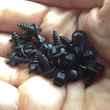


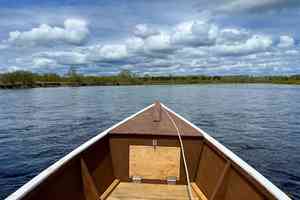



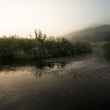
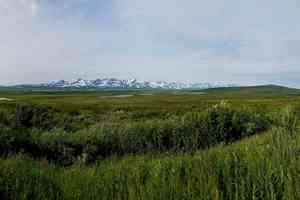


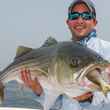
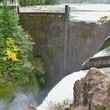



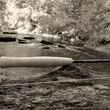
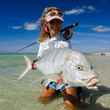



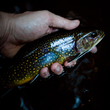
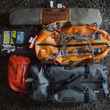
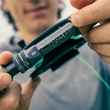
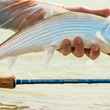


Comments
Mac Hodell replied on Permalink
What is the basis for the 'stop fishing at 65 degrees' guideline? Used to be 68-70. What's next? 64? 63?
I've read reputable guidance that does not support stopping at 65.
This sure feels like creeping safetyism at work.
t tanner replied on Permalink
Good question, Mac. There are four reasons I said 65, rather than 67 or 68.
First, many anglers play their trout for too long and have no clue how to handle them or release them safely. When I'm offering advice on fishing and water temperatures, I have to take that into account.
Second, I use an accurate-within-0.5 degrees F thermometer that retails for more than $100. Most folks don't. They go with inexpensive thermometers that may be off by a degree or two or three. Since we know that our temperature readings could easily be off by a couple of degrees, it pays to be a little more cautious.
Third, most folks don't leave their thermometers in the water long enough to get an accurate reading. Taking that into account, it makes sense to err on the side of safety.
Fourth, I'd rather cut the trout a little extra slack. If I'm fishing for heavily-pressured trout, or trout that have just dealt with one or more long-term environmental stressors that I'm aware of, I typically quit when the water temp hits 63 or 64 degrees.
Long story short, it's way more important for me to treat the resource with respect than it is to catch a few more fish or stay out a little longer on a hot day.
Garrett Maiolo replied on Permalink
There's alot of elitism in this post. Articles like this will keep new anglers from trying the sport, which makes this sport die with this generation. There is nothing wrong with taking pictures of fish. This sport is about having fun. Not following unwritten rules.
Rich Johnson replied on Permalink
Love the bigger hammer technique for crap quality equipment!
Anonymous replied on Permalink
really good stuff. Reminders that we all need to think about as the season begins. thanks.
Rich Lahti replied on Permalink
Most of these are good advice, a couple are pure BS.
Tim replied on Permalink
Great article, especially the two that are intangibles: awareness & pace. Pace is a conscious effort anyone can achieve, but awareness takes time to cultivate & is a life long growth goal for any angler worth their salt! I started tying in the past 2 years & you’re right, it’s added a whole new layer that I love. In a way, it brings me to the stream on days I can’t actually go to the stream and has really helped with my entomology understanding and through that a better understand of what lies beneath. There’s also nothing more satisfying than fooling a wild fish with something from your vice that you managed to tie on and drift properly. The only other thing I’d add is 13- know a handful of knots and be able to tie them really well. Tight lines everyone!
Glenn Dotter replied on Permalink
Good article. I agree with most points. Especially fast action rods. I wont own one. Med action IM6 graphite was the ultimate graphite. You can have those fast action Sage's that break 6" from the tip. Fast actions are just too stiff.
Your comment on reels is just that. I used and still have a Phleuger Gem and learned how to palm a reel. You simply dont need an expensive reel for normal trout fishing. Drags are nice, but one click can cost you a fish. I only have one reel that cost $150. All others cost less than $60 and I have been flyfishing for 62 years.
Too many folks think you have to have expensive everything. It simply isnt necessary for normal trout fishing. They look like an Orvis Catalog. The rest of the points are the real keys. Spend thousands if you must, but that wont help you if you dont learn the rest of this article.
Rick B replied on Permalink
Log your catch using key, independent variables:
Fly type
Weather conditions
Water conditions
Light conditions
Lunar phase
Time of day
Season
Best way to learn what matters to the trout.
Jim Parks replied on Permalink
Great advice. I've been logging EACH trip since 1989. Now, 34 years later when I sit at the vice, I know the top patterns to tie. When I arrive at the stream, I look at the water conditions and use the "recommended" flies based on my database, which I call "Fishmetrics" that I keep in a sortable Excel worksheet with a copy on my smartphone. I'm at a point where the information is rarely wrong. I mostly use a dual nymph rig and I try new "latest & greatest" patterns on the bottom fly to keep my program honest. All it takes is few observations during the day and a few minutes of entry at night.
If you plan to flyfish for the long haul, it's a game changer.
To see the article; Costal Angler Magazine Feb 2022 Fishmetrics
Jim Parks
Instagram: TailsOfTheSmokies
steve replied on Permalink
I am a blasphemer. I fish downstream
Pages